4 Chapter 4
The Classical Era (1750-1820)
OPENER (6:40min) – https://www.youtube.com/watch?v=1SrFlJC43TY
By Bethanie L. Hansen
The Classical period was known as the Enlightenment, or the Age of Reason. The era spanned about seventy years
(1750-1820), but in its short duration, musical practices began that have influenced music in the nearly two hundred
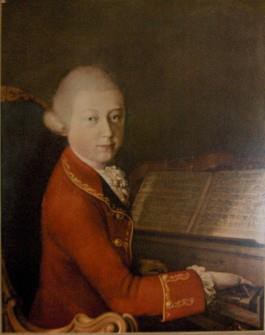
Figure 4.1 Saverio Della Rosa,
Wolfgang at Verona, 1770.
years since. Classical period music is by far the most common Western music known today. During this period, public concerts became prominent, instrumental music was further developed, secular music became more prevalent than church music, and opera took a new role as a more important form of vocal entertainment and musical drama. Wolfgang Amadeus Mozart and Franz Joseph Haydn each found a place in the music world and produced music as expression, art, and entertainment.
Relevant Historical Events
The Western world of the mid-1700s transformed through intellectual and industrial revolutions. Early in the Enlightenment period, René Descartes and Sir Francis Bacon streamlined the scientific method, leading to Isaac Newton’s physics discoveries. People began to experiment and explore ideas like never before, which resulted in developments and inventions. The Industrial Revolution brought agricultural changes, mechanized textile manufacturing, and new power sources like the steam engine. On assembly lines, workers began to specialize in the monotonous creation of only one small part rather than an entire product. In the home, families that had created homespun wool could no longer earn wages
by making and selling hand-woven materials. Changes in the structure of work and community paved the way for salon gatherings and public concerts.
Learn more about developments of the Industrial Revolution through this YouTube
video (transcript available). FUN FACT – Link loaded in module (Classical Era), “Industrial Revolution“
INDUSTRIAL REVOLUTION VIDEO(2:00min) – https://www.youtube.com/watch?v=aO3AW0JAHmU
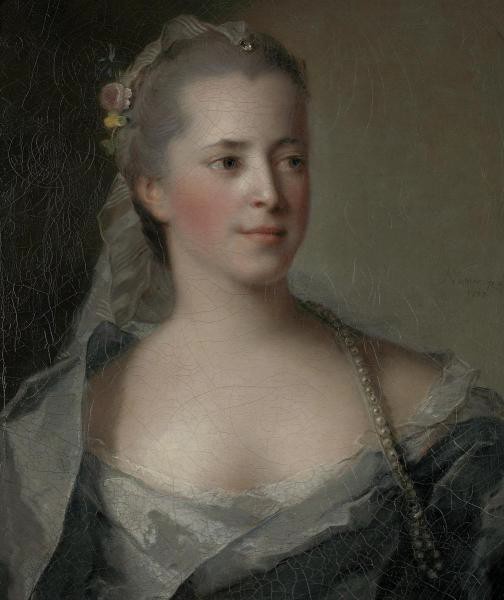
Figure 4.2 Jean-Marc Nattier, Portrait of Princess Ekaterina Dmitrievna Golitsyna, 1757.
Political Influences
The period of 1600 through 1750, known as the Age of Absolutism, focused on the divine right of kings and other monarchs as chosen by God. During the Enlightenment, however, this philosophy began to change. European countries were regularly at war with each other. Britain declared war on France; France and Austria entered into an agreement against Prussia called the first treaty of Versailles; Frederick II invaded Saxony and began the Seven Years’ War; and
France and Austria entered into the second treaty of Versailles with a plan to split up Prussia. For several years, political leadership came from royalty who had inherited their thrones and courts. Despite invasions and wars throughout Europe, a few leaders tried to improve the conditions of their people. These monarchs, commonly known as enlightened despots, implemented reforms like religious toleration and economic development. Joseph II, a leader in the Habsburg Empire that included Austria and Hungary, set peasants free, suppressed church authority, and promoted education, music, literature, and a free press. This positive atmosphere lured artists from outside areas to Vienna, where they could create
freely. Mozart, from Salzburg, Haydn, from Rohrau, Austria, and Ludwig van Beethoven, from Bonn, are a sampling of the artists who flocked to Vienna.
At the beginning of the Enlightenment era, courts and noblemen ruled Europe, and European powers governed the American colonies. By then end of the era, though, the United States had fought in the Revolutionary War, created the Declaration of Independence, and adopted the Bill of Rights. Government by the people became a theme of the period. Exploration and freedom in the United States allowed creativity and inventiveness to develop.
Social Influences
The Enlightenment was a movement of intellectual and social ideals. Writers and philosophers examined social theories. The phrase “life, liberty, and the pursuit of happiness” was based on the ideas that English philosopher John Locke (1632-1704) held about human beings having the right to freedom and autonomy. Locke believed that people gained wisdom and knowledge from personal experience. The Swiss philosopher Jean- Jacques Rousseau (1712-78) declared that the shared creation of laws could help people obtain happiness and build a better society. The ideals of these and other philosophers of the era led to societal and governmental changes that placed power in the hands of citizens. General theories of identity shifted from an emphasis on estates, ranks, and nobility to the perception of the individual as the basic unit in society. It was this kind of thinking that led Mozart to rebel against tradition and common practice by pursuing independent music sales and commissions rather than serving a court for his livelihood.
Cultural Influences
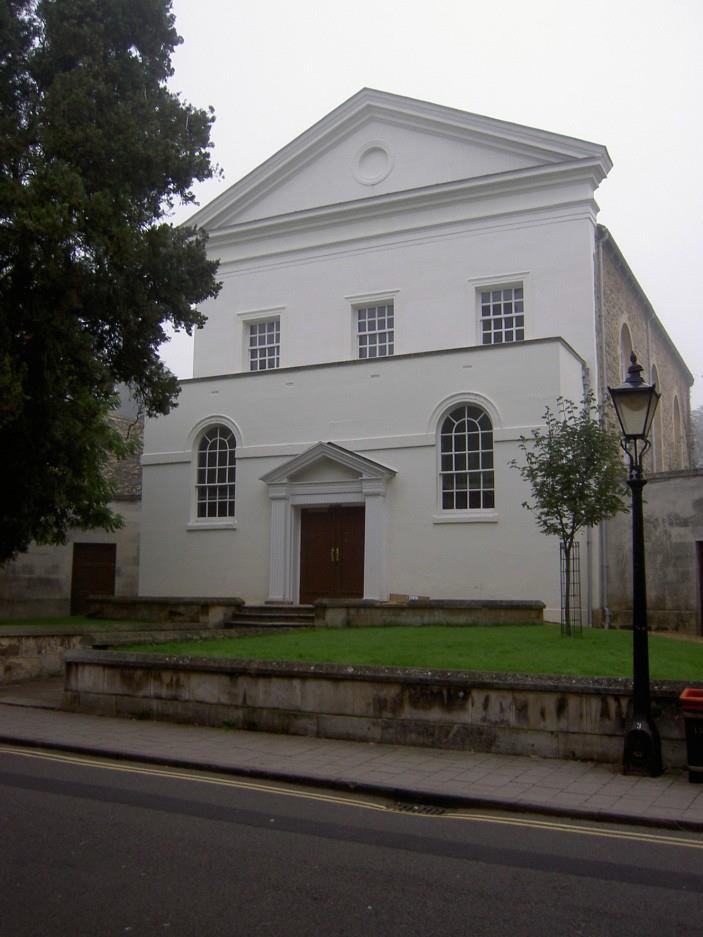 As European society gradually changed from agrarian to working class and an emphasis was placed on enjoying beauty and pleasure, public concerts became important, and the arts were widely developed.
As European society gradually changed from agrarian to working class and an emphasis was placed on enjoying beauty and pleasure, public concerts became important, and the arts were widely developed.
In 1748, the first concert hall was built in Oxford, England, and it is still being used today. People regularly attended concerts and operas for entertainment as music became available to the lower classes. This trend allowed for a gradual shift from the patronage system, where musicians worked for royal courts, to the free enterprise system, where they earned money through commissions, ticket sales, and other performance-related income.
Figure 4.3 Ny Björn, The Holywell Music Room, 2008. The Holywell Music Room in Oxford,
England, built in 1748, was the first European concert hall and is still used today.
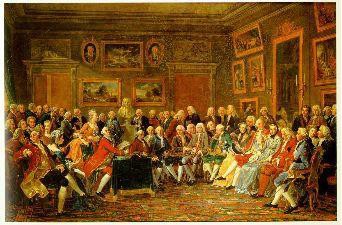
Figure 4.4 Anicet-Charles-Gabriel Lemonnier, In the Salon of Madame Geoffrin in 1755,1812. The painting shows people dressed in 1700s clothing meeting and discussing ideas.
Amateur musicians became common, with women in particular pursuing music studies. Music involvement was a social activity. Printed music was sold publicly for pianoforte (an instrument much like today’s piano), voice, and small ensembles. Just as learning to play one’s own music became widespread, literacy across Europe increased, and the availability of printed materials also increased. Coffee houses grew to become microcosms of academic life and hubs of public information. Debate clubs emerged, meeting in salons and other gathering spots to discuss political matters, philosophy, and other intellectual issues.
In the visual arts of the period, religious influences were still prominent in addition to formal portraits of royalty, nature scenes, and sculpted busts, masks, and statues. Some paintings depicted the ideal physical form like that of the Greek Classical period. In the painting Joseph and his Brothers, brothers presented in the lower left and right corners of
the image possess sculpted muscles from hard labor, emphasizing their physique. In contrast, Joseph stands calmly, bathed with light, portraying an image of power, prosperity, and authority through his clothing and demeanor.
Defining Characteristics of Classicism in Music
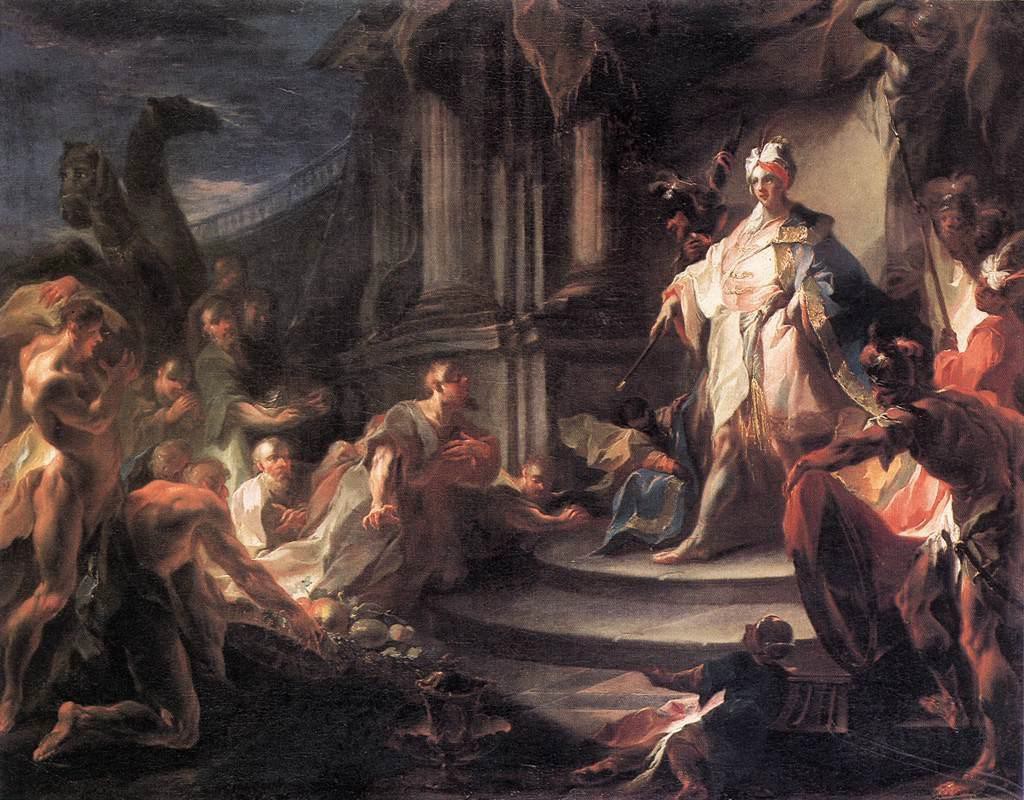
Figure 4.5 Franz Anton Maulbertsch, Joseph and his Brothers, 1745-50.
Although Baroque music was evenly divided between vocal and instrumental music genres and secular and sacred music, composers began to move toward specific trends in the Classical period that followed. Instrumental music grew in popularity during the Classical period because instruments, tonal systems, and orchestral writing in the Baroque period had become more standardized. The harpsichord declined in popularity as the pianoforte became prominent. Composers concentrated on creating new music with larger forms,
including sonatas, symphonies, and string quartets, that allowed audiences to be continually entertained over a longer period of time. Vocal music also continued to develop in the Classical period, taking opera to a new level where composers integrated recitative and aria forms to move the drama of opera forward.
In contrast to the ornamentation and decoration of the Baroque period, Classical music was focused on clarity, precision, and formal structure. The melody in a musical work was the most important component. An emphasis on melody meant that the harmony in
 most works was homophonic. Instead of several competing melodies, as was the case in the polyphonic textures of the Renaissance and Baroque eras, background materials supported the main melody as much as possible. Tonality and
most works was homophonic. Instead of several competing melodies, as was the case in the polyphonic textures of the Renaissance and Baroque eras, background materials supported the main melody as much as possible. Tonality and
Figure 4.6 Clip art image of a man wearing headphones and seated in front of a computer, used with permission from Microsoft.
tonal centers were very clearly defined, with chord progressions helping to define major sections of the music.
Critical Listening
Several significant works are presented in this chapter, though
they are only a small part of the many great works created during the Classical period. As you listen to Classical music, use the key music terms presented in Chapter 1 as tools to describe what you hear. Apply your new skills to the listening examples throughout the course and other music you listen to for pleasure.
Listening Goals
- Identify any Classical period traits in the music.
- Listen for instruments and timbres, identify the type of ensemble you hear and who is performing, and note whether a harpsichord is present.
- Observe patterns, rhythms, melodies, and motives that occur within the form.
- Listen for dynamic and tempo changes, including sudden or gradual changes in both dynamics and tempo.
- Practice describing these observed concepts using the music terms instrumentation, timbre, texture, tempo, dynamics, and form.
Key Music Terms

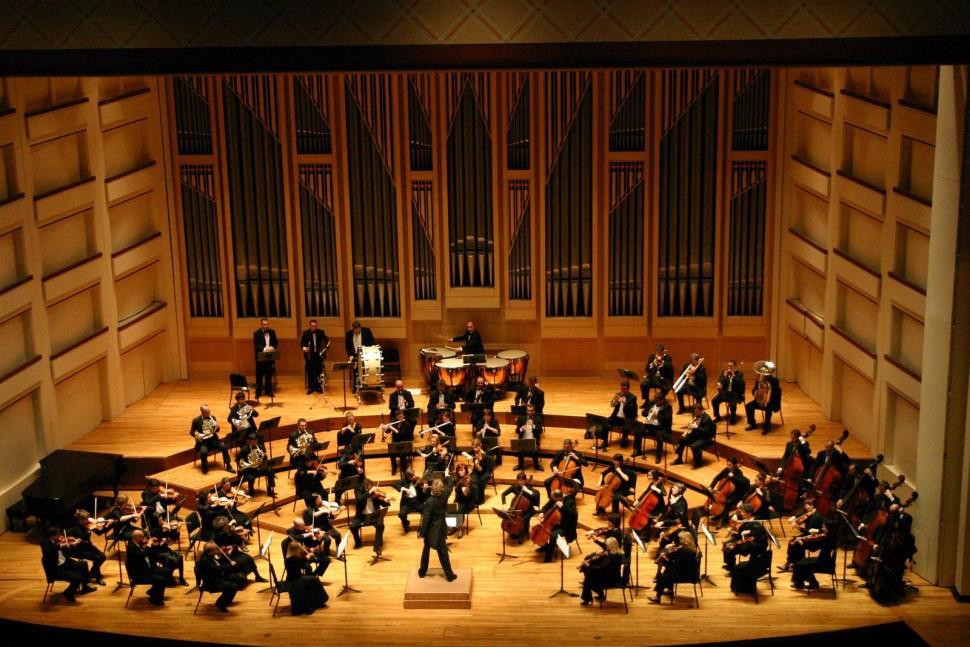 I
I
Instrumentation, became more standardized during the Classical period. For example, the symphony orchestra was organized into a format with specific
instruments and sections, as we recognize orchestras today. During
Figure 4.7 Derek Gleeson, Dublin Philharmonic Orchestra in Performance, Tchaikovsky 4th Symphony, 2011.
the Classical period, the harpsichord was no longer a prominent instrument, but the pianoforte—a forerunner of the modern piano—became very popular.
Timbre, or tone quality, describes the quality of a musical sound. Timbre is  generally discussed using adjectives, like bright, dark, buzzy, airy, thin, and
generally discussed using adjectives, like bright, dark, buzzy, airy, thin, and
smooth. Many different adjectives can be effectively used to describe timbre, based on your perceptions and opinions about what you hear in the sound. Classical composers used
instruments for their traditional sounds. Performers sometimes became virtuosos, extremely skilled at demonstrating advanced performing abilities.
 Texture is a term that describes what is going on in the music at any moment.
Texture is a term that describes what is going on in the music at any moment.
Musical texture is the way that melody, harmony, and rhythm combine. Texture can be described in musical terms like monophonic, homophonic, and polyphonic or with adjectives like thin, thick, and rich. A lot of Classical period music was homophonic and revolved around melody or melodic statements. Some Classical music included the fugue, which was polyphonic.
Harmony is created when at least two voices perform together. Two different types  of textures exist in music that may create harmony: homophony and polyphony.
of textures exist in music that may create harmony: homophony and polyphony.
One additional musical texture, monophony, does not include any harmony. Monophony was not as common during the Classical period as it was in earlier years.
When considering musical texture, ask yourself these questions:
- What instruments or voices am I hearing?
- Do I hear one melody, or more than one?
- Are the extra voices or instruments changing together or at different times?
- Is it difficult to identify the melody, perhaps because there are several melodies happening at once?
 Tempo is the speed of the music. Tempo may also be called time. Tempo can change during a piece to add expression or emotional communication. One
Tempo is the speed of the music. Tempo may also be called time. Tempo can change during a piece to add expression or emotional communication. One
example of tempo change is rubato, which means to slow the tempo. Speeding up the
tempo is called an accelerando, and slowing down gradually is called ritardando. Classical period music began to explore tempo changes.
 Rhythm became an important area of focus in Classical music. Although during the Baroque period rhythms were constant and repetitive, Classical music rebelled
Rhythm became an important area of focus in Classical music. Although during the Baroque period rhythms were constant and repetitive, Classical music rebelled
against this uniformity. Rhythm was used as a tool to drive audience interest during the late 1700s and became flexible. Rhythm became one of several ways composers provided variety in their works while still maintaining enough cohesiveness to keep listeners interested.
 Dynamics are changing volume levels of musical sounds. Dynamics can range from softer than piano (soft or quiet) to above forte (loud). Dynamics can also
Dynamics are changing volume levels of musical sounds. Dynamics can range from softer than piano (soft or quiet) to above forte (loud). Dynamics can also
change, getting louder (crescendo) and getting softer (diminuendo). Dynamics and changing dynamics give the music expression, make it interesting, and add variety.
Ex: Mozart; Sonata 11, Rondo mov.: https://www.youtube.com/watch?v=SQh1zztmpEk
 Form is the organization and structure of a musical selection. In the Classical period, new and precise forms were created to help composers produce large
Form is the organization and structure of a musical selection. In the Classical period, new and precise forms were created to help composers produce large
quantities of quality music on demand. Some of these forms included the sonata, rondo, theme and variations, and minuet and trio. The multimovement symphony was developed to provide extended performances that entertained audiences for greater lengths of time, as concert halls were built and concert attendance became a public pastime.
Instrumental Music Forms
Instrumental music from this period mostly fit into the multimovement format. (aka: Symphony)
Movements are complete sections of a work with their own form, often a binary (aab) or ternary (aba) form. In binary form, the music consists of two distinct sections without a
return of the first section as in the minuet and trio form. In ternary form, the first section presents the theme or main ideas, the next section develops in a new key using other musical ideas, and the final section returns to the familiar material from the first section either in part or whole.
Symphony : A typical four-movement work was organized in the following manner:
- A fast movement in sonata (aba) form
- A slower movement in theme and variation form or some kind of ternary (aba) form
- A dance movement, often a minuet and trio (aab) or scherzo and trio
- A fast movement, often a rondo (abacada) or sonata (aba) form
When a musical work consisted of only three movements, the third dance movement was left out—a choice commonly made by Mozart.
The term sonata refers to both a piece of music performed by a single instrument— usually the piano—or a small group and also to the first movement in a large, multimovement work. Listen to Mozart’s Piano Sonata no. 11 in A Major, Rondo Alla Turca,
K. 331. This particular Mozart sonata includes a first movement in theme and variations form, a second movement in minuet and trio form, and a final movement in rondo form. Mozart left out the typical first-movement sonata form altogether.
Composers
Three Most Famous Composers of the Era
- Joseph Haydn
- Wolfgang Amadeus Mozart
- Ludwig van Beethoven
The two most significant composers of the Classical era were Wolfgang Amadeus Mozart (1756-1791) and Franz Joseph Haydn (1732-1809). Both men were Austrians, and both continue to gain popularity among today’s audiences through public orchestra
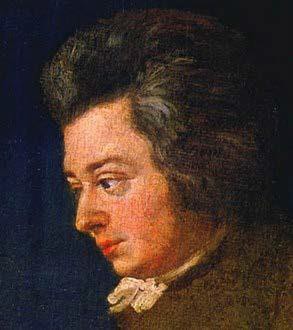
Figure 4.8 Joseph Lange, Mozart at the Pianoforte, 1782-83.
performances of their works and thousands of recordings available through the Alexander Street online library and other sources.
Wolfgang Amadeus Mozart
Mozart (1756-1791) was born in January 1756, in Salzburg, Austria. At the time of his birth, several European countries were fighting over territory, entering treaties, and declaring war. Despite the politically turbulent
events of his time, Mozart flourished as a young musician. He learned his first scherzo on
pianoforte at age five and performed twice as a singer that year—once in a play and once as part of a children’s group in Munich. His father, Leopold, taught him to play piano as well as academic subjects and languages. Listen to part of Mozart’s Piano Concerto no. 21.
Early in his childhood, Mozart showed musical genius, dedication, and creativity. At age five, he composed six keyboard works, including Andante in C Major, https://www.youtube.com/watch?v=i-6WSGX5aMg Allegro in F Major, three different minuets in F, and Allegro in B-flat Major, all of which were dedicated to his father. In his childhood, Wolfgang showed early musical genius, dedication, and creativity. Mozart’s father recognized his son’s unusual musical talents, and he subsequently invested all of his time and energy into training and promoting his son. He took Mozart and his sister, Maria Anna, also a musician, on an extensive performance tour across Europe to perform for political leaders and dignitaries. During this tour, which took place from 1763 to 1766, France, Spain, and Great Britain signed the Treaty of Paris (1763) and Prussia and Austria
signed the Peace of Hubertusburg treaty (1763), ending the Seven Years’ War. All of Mozart’s family members became ill during the tour, and he himself had scarlet fever and several unnamed illnesses during the trip. Despite the hardship, Mozart composed more than fifteen varied musical works and performed in many royal courts and public venues while traveling.
When he turned twelve, Mozart’s father took him back to Vienna to build his musical career. By this time, his second symphony had already been completed. In Vienna, he was commissioned to write an entire opera buffa (an Italian comic opera),

Figure 4.9 Louis Carmontelle, Leopold Mozart and His Children, Wolfgang and Maria Ana, 1763 or 1764.
which was completed but not performed in Vienna. Mozart and his father returned to Salzburg, where the opera buffa was performed. After two performance tours in Italy, which yielded commissions to write operas and other works but no offers of employment, Mozart was eventually hired as the Salzburg Konzertmeister (conductor) and given a salary at age sixteen. Mozart was an energetic and brilliant but arrogant teen who thought he could find better opportunities for more pay. He and his mother traveled to Paris in 1778 hoping that he would find more desirable employment. Unfortunately, no offers appeared, and his mother became ill and died during the trip.
Musical Genius; Mozart’s dysfunctional & impractical side:
Mozart settled in Vienna and married at age twenty-six. He and his bride moved constantly, and they had six children, though four died as infants. Mozart was constantly unemployed and poor, wielding an arrogance and impulsivity that angered potential employers. Those who knew him well described him as intensely focused about his music while manic much of the rest of the time. Mozart carried out practical jokes, wrote dramatic and occasionally obscene letters, and appreciated scatological humor.
Mozart was influenced by George Frideric Handel and Johann Sebastian Bach, whose fugues he imitated in some of his later opera works. He also influenced many composers, including Johann Nepomuk Hummel, Beethoven, Frédéric Chopin, and Pyotr IlyichTchaikovsky, for hundreds of years. Mozart composed more than six hundred works, including many symphonies, operas, and concertos. His opera The Magic Flute (Die Zauberflöte, K. 620) premiered shortly before his death. Listen to “Der Hölle Rache kocht in
meinem Herzen” from act 2 of The Magic Flute. Mozart died at thirty-five from rheumatic
fever in 1791.
Mozart Opera:
- Selections from Mozart’s The Marriage of Figaro:
- Highlights: https://www.youtube.com/watch?v=EEorTDORC5I
Mozart’s Overture – “The Marriage of Figaro”: https://www.youtube.com/watch?v=Mp6UAGN_Ir4
Mixup on “Willy Wonka & The Chocolate Factory” between Sergei Rachmanioff & Mozart (oops)
For additional information about Mozart, visit the following websites:
- The Mozart Project: http://www.mozartproject.org/index.html
- Salzburg Tourism: http://www.salzburg.info/en/art_culture/mozart
- Digital Mozart Edition: http://dme.mozarteum.at/DME/main/index.php?l=2
Franz Joseph Hayden
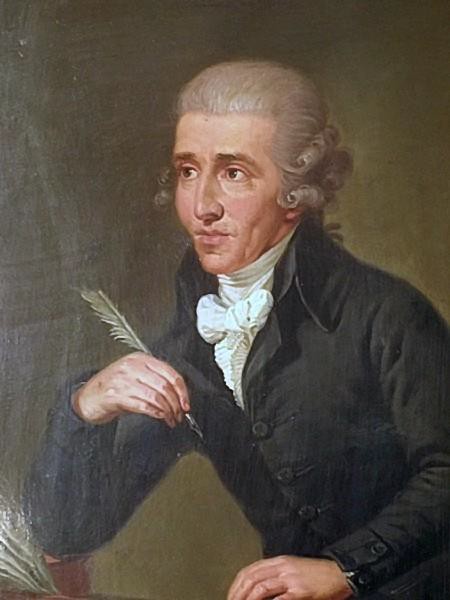 Haydn
Haydn
Haydn’s “The Creation” Oratorio excerpt: https://www.youtube.com/watch?v=5OXSO569HVo
Franz Joseph Haydn (1732-1809), was born in Rohrau, Austria. He was called Joseph rather than Franz by those who knew him and had been born into a large, musical family of twelve children. His father was a master wheelwright (a person who builds wagon wheels) and a magistrate who played the harp well but did not read music. Haydn’s mother worked in Harrach castle (an
estate in Rohrau) as a cook prior to
marrying and was an excellentFigure 4.10 Ludwig Guttenbrunn, Portrait of
Joseph Haydn, circa 1770.
singer. As a child, Haydn was invited to
live with a cousin in Hainburg who was a church choir director and school principal. While there, Haydn learned to read and write, sing, and play string, wind, and percussion instruments. When he was seven years old, he became a choirboy in Vienna, singing soprano for the next ten years. At age seventeen, once his voice had broken and he was not able to sing the high pitches of a soprano any longer, Haydn was forced to leave the choir.
Haydn spent the first part of his career working for the prince of Esterházy in Austria, which he continued to do for thirty years until the prince died. As part of his service to the prince, Haydn wrote a variety of music for every occasion and had an in-house orchestra and
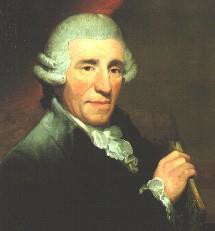 opera company. His most famous works are string quartets, sonatas, and symphonies. He was considered “Father of the Symphony”. Listen to Haydn’s String Quartet no. 62 in C Major, known as “Emperor” (1796-1797). Haydn became an independent musician and composer after the prince’s death, selling his music privately. He was a tough businessman who negotiated dishonestly at times, but he also shared his wealth freely with those he cared about. Over the course of his life, Haydn was an interesting example of the cultural change
opera company. His most famous works are string quartets, sonatas, and symphonies. He was considered “Father of the Symphony”. Listen to Haydn’s String Quartet no. 62 in C Major, known as “Emperor” (1796-1797). Haydn became an independent musician and composer after the prince’s death, selling his music privately. He was a tough businessman who negotiated dishonestly at times, but he also shared his wealth freely with those he cared about. Over the course of his life, Haydn was an interesting example of the cultural change
from the patronage system in which composers served courtly nobles to the free enterprise system in which composers created music to “sell” through public performances and other means.
Throughout his life, Haydn was affectionately called Papa Haydn. He was a
conservative man who cared for others. The term
Papa referred both to his concerns for others and
Figure 4.11 Thomas Hardy, Joseph Haydn, 1791.
to his contributions to the music discipline. Haydn lived to be seventy-seven years old. He taught younger students and directed performers with a patient manner, and he possessed virtue and character. At the same time, Haydn was proud of his own works and let others know it.
Haydn had a good sense of humor and enjoyed creating musical “jokes,” such as something unexpected within a piece. For example, in his Surprise symphony, the joke is presented as a suddenly loud note in the middle of the opening melody, after which the music immediately returns to a very quiet dynamic. Listen to part of the four-movement Symphony no. 94 in G Major (1791). Haydn’s music focused on single themes that
developed throughout a piece rather than including a secondary theme as other composers often did. A reviewer who attended one of his concerts described the music as “simple, profound, and sublime” (Robbins Landon, 1976). Haydn composed polite, dignified music that pleased audiences immensely.
Haydn contributed much to music during the Classical era. He composed just fewer than 300 works, including 104 symphonies, 35 concertos, 60 piano sonatas, 82 string quartets, two oratorios, and several masses. Listen to Haydn’s Trumpet Concerto in E-flat
Major (1796). During early musical periods like the Classical era, trumpets in several different keys were used because instruments had not been standardized. The Haydn Trumpet Concerto was performed on an E-flat trumpet, which musicians still use today to perform the work, rather than the B-flat trumpet commonly used.
For more information about Franz Joseph Haydn, visit Encyclopaedia Britannica’s page on the composer.
Ludwig van Beethoven
Beethoven’s music can be divided into three distinct periods within his composing career. Early Beethoven music (to 1802) generally fit under Classical period techniques and traditions and was influenced by Mozart and Haydn. (More about Beethoven in Romantic Era Chapter, 5)
Closing
In the years commonly recognized as the Classical era, the aristocratic conditions of Austria produced two of the world’s most significant composers—Haydn and Mozart. During their lives, both men experienced the decline of the patronage system and the growth of free enterprise, commissions, concerts, and personal music sales. Throughout Europe, the middle class became more influential, and the Industrial Revolution began. With this revolution, the musical world also experienced a revolution of sorts. A new musical style emerged that produced hundreds of great works, including string quartets, symphonies, concertos, and operas along with several new forms such as the sonata and rondo forms.
Form
This week, watch the video “Form: The Shape of Music,” part of the Annenberg Learner
video series we will be viewing throughout the text.
Guiding Questions:
- What are some characteristics of Classical-era music?
- What new developments were noteworthy during the Classical era?
- How did forms change during the mid-eighteenth century from the previous period?
- Who were some of the significant composers during the period of 1750 to 1820?
- What noteworthy pieces were composed during this period?
Self-Check Exercises
Complete the following self-check exercises to verify your mastery of key music terms presented in this chapter. Check answers at the bottom of page.
- Which of the following traits could describe music of the Classical era?
- Extreme emotion
- Dissonance
- Supernatural or macabre themes
- Simplicity and pleasing variety
- Which composer became prominent during the Classical era?
- Mahler
- Mozart
- Stravinsky
- Ventadorn
- What type of music is performed in more than one movement and involves instrumental performers?
- Bel Canto
- Symphony
- Opera
- Lieder
- Which type of music did Haydn compose?
- Concertos
- Symphonies
- Sonatas
- All of the above
Self-check quiz answers: 1. d, 2. b. 3. b, 4. d.
Additional Resources
Complete the following activities and consult the included resources.
- As part of the Chapter 4 assignments, please visit SFO Instrument Garden. Explore
the instruments in the instrument library. Here you can play a scale on each instrument and feel how the instrument is played.
- Visit the following websites:
Optional Enrichment
These examples are provided for additional enrichment for interested students, not as required viewing.
- Selections from Mozart’s The Marriage of Figaro:
- Highlights: https://www.youtube.com/watch?v=EEorTDORC5I
Soprano aria, “Dove sono i bei momenti.” Tenor aria, “Hai già vinta la causa!”
- “The Pursuit of Happiness,” a personal view by Kenneth Clark. This video depicts art
and music of the late Baroque and early Enlightenment eras.
Transcript: “Industrial Revolution”
What does it take to move a mountain?
During the Industrial Revolution, technological and socioeconomic mountains were not only moved but transformed, and the sweeping changes initiated in Britain eventually affected countries all over the world.
In the eighteenth century, domestic peace, economic health, and the availability of critical iron and coal resources in Britain set the stage for change. Ingenuity turned the spinning wheel, a simple craftsperson’s tool for hundreds of years, into a time- and labor-saving device. It wasn’t long before textile and loom factories essentially replaced home spinning and weaving. With the textile industry leading the way, the shift in manufacturing created unprecedented demand for new machines, mechanical components, processed materials, and skilled labor. Transportation systems expanded to keep up with the escalating flow of goods. Cities grew. Work became increasingly specialized, mechanized, and urbanized. An agriculture-based economy evolved into an industrial one.
The marriage of science and industry produced great changes both at home and abroad. Eli Whitney’s cotton gin, 1763. Charles Babbage’s mechanical computer, 1834. The first steam carriage, steam ship, and steam locomotive—all these inventions emerged within a very fertile eighty-year span. And even today, many of the world’s mountains are still being moved as the products and processes born of the Industrial Revolution continue to shape and transform our modern lives.
Works Consulted
Arnold, Denis and Julian Rushton. “Mozart.” The Oxford Companion to Music. Ed. Alison Latham. Oxford: Oxford University Press, 2011. Oxford Music Online. Web. 5 May 2012.
Björn, Ny. Holywell Music Room. 18 Sept. 2008. Wikimedia Commons. Wikipedia Foundation, 6 Jan. 2012. Web. 5 May 2012.
<http://commons.wikimedia.org/wiki/File:Holywell_Music_Room.jpg>.
Boerner, Steve. The Mozart Project. 24 Sept. 2011. Web. 15 Apr. 2014.
<http://www.mozartproject.org/index.html>.
Carmontelle, Louis. Leopold Mozart and his Children, Wolfgang and Maria Anna. 1763 or 1764. Carnavalet Museum, Paris. Wikimedia Commons. Wikipedia Foundation, 21 Dec. 2011. Web. 15 Apr. 2012.
<http://commons.wikimedia.org/wiki/File:Wolfgang_Leopold_Nannerl.jpg>.
Clark, Caryl. “Haydn, Joseph.” The Oxford Companion to Music. Ed. Alison Latham. Oxford: Oxford University Press, 2011. Oxford Music Online. 20 Apr. 2012.
“Classical period.” Encyclopaedia Britannica Online Academic Edition. Encyclopaedia Britannica Inc. 2012. Web. 17 Aug. 2012.
Construction tools sign, used with permission from Microsoft. “Images.” Office. Web. 4 Sept.
2012. <http://office.microsoft.com/en- us/images/results.aspx?ex=2&qu=tools#ai:MC900432556|mt:0|>.
Della Rosa, Saverio. Wolfgang at Verona. 1770. Collection of Alfred Cortot, Lausanne.
Wikimedia Commons. Wikimedia Foundation, 5 July 2006. Web. 2 May 2012.
<http://commons.wikimedia.org/wiki/File:Mozart_at_Melk09.jpg>.
Eisen, Cliff, et al. “Mozart.” Oxford Music Online. Grove Music Online. Web. 2 May 2012.
“Form: The Shape of Music.” Exploring the World of Music. Prod. Pacific Street Films and the Educational Film Center, 1999. Annenberg Learner. Web. 31 July 2012.
<http://www.learner.org/resources/series105.html>.
Gleeson, Derek. Dublin Philharmonic Orchestra in performance, Tchaikovsky 4th Symphony. 24 June 2011. Wikimedia Commons. Wikipedia Foundation, 29 Mar. 2012. Web. 7
May 2012. <http://commons.wikimedia.org/wiki/File:Tch_In_Charlotte.JPG>.
Guttenbrunn, Ludwig. Portrait of Joseph Haydn. Circa 1770. Wikimedia Commons. Wikipedia Foundation, 6 Apr. 2012. Web. 5 May 2012.
<http://commons.wikimedia.org/wiki/File:Haydnportrait.jpg>.
Hardy, Thomas. Joseph Haydn. 1791. Royal College of Music, London. Wikimedia Commons.
Wikipedia Foundation. 7 May 2012. Web. 23 Aug. 2012.
<http://commons.wikimedia.org/wiki/File:Haydn_portrait_by_Thomas_Hardy_(small)
.jpg>.
“Haydn, Franz Joseph.” The Oxford Dictionary of Music, 2nd edition revised. Eds. Michael Kennedy and Joyce Bourne. Oxford Music Online. Web. 1 May 2012.
Haydn, Joseph. String Quartet no. 62 in C Major. Perf. Carpe Diem Quartet of HSPVA.
YouTube. 23 Mar. 2012. Web. 22 Aug. 2012. <http://youtu.be/QKVFDAQ2KAs>.
—. “Surprise,” Symphony No. 94 in G major. 1791. Perf. Barry Wordsworth. YouTube. 10 Dec. 2008. Web. 23 Aug. 2012. <http://youtu.be/0gF-Wzp8Ni8>.
—. Trumpet Concerto in E-flat Major. 1796. Perf. Peter Skvor, Capella Istropolitana, and Miroslav Kejmar. YouTube. 21 Mar. 2010. Web. 23 Aug. 2012.
<http://youtu.be/Xz_4jrhwIiQ>.
“Joseph Haydn.” Encyclopaedia Britannica Online Academic Edition. Encyclopaedia Britannica Inc. 2012. Web. 17 Aug. 2012.
Lange, Joseph. Mozart at the Pianoforte. 1782-3. Stiftung Mozarteum, Salzburg, Austria.
Wikimedia Commons. Wikipedia Foundation, 2 Dec. 2010. Web. 19 April 2019.
<http://commons.wikimedia.org/wiki/File:Mozart_Lange.png>.
Lemonnier, Anicet-Charles-Gabriel. In the Salon of Madame Geoffrin in 1755. 1812. Malmaison Castle Museum, Rueil-Malmaison, France. Wikimedia Commons. Wikimedia Foundation, 3 Feb. 2012. Web. 5 May 2012.
<http://commons.wikimedia.org/wiki/File:A_Reading_in_the_Salon_of_Mme_Geoffri n,_1755_Small.jpg>.
Little, Meredith Ellis. “Minuet.” Oxford Music Online. Grove Music Online. Web. 17 May 2012.
Man wearing headphones and seated in front of a computer, used with permission from Microsoft. “Images.” Office. Web. 4 Sept. 2012. <http://office.microsoft.com/en- us/images/results.aspx?qu=listening%20to%20headphones&ctt=1#ai:MP9004225 41|mt:2|>.
Maulbertsch, Franz Anton. Joseph and his Brothers. 1745-50. Museum of Fine Arts, Budapest, Hungary. Wikimedia Commons. Wikipedia Foundation, 5 Jan. 2012. Web.12 May 2012
<http://commons.wikimedia.org/wiki/File:Franz_Anton_Maulbertsch_-
_Joseph_and_his_Brothers_-_WGA14678.jpg>.
Mozart, Wolfgang Amadeus. “Der Hölle Rache kocht in meinem Herzen.” Die Zauberflöte. 1791. Perf. Patricia Petibon and Concerto Köln. Cond. Daniel Harding. YouTube. 11 Oct. 2011. Web. 24 Feb. 2016. <https://youtu.be/dLs-Z47oFYw>.
—. “Dove sono i bei momenti.” Le Nozze di Figaro (The Marriage of Figaro). 1786. Perf. Cellia Costea. Cond. Ingo Metzmacher. The Netherlands Opera. 1996. Alexander Street Press. 2008. Web. 15 July. 2016.
<http://ezproxy.apus.edu/login?url=https://search.alexanderstreet.com/view/work/ 860437>.
—. “Hai già vinta la causa!” Le Nozze di Figaro (The Marriage of Figaro). 1786. Perf. Garry Magee. Cond. Ingo Metzmacher. The Netherlands Opera. 1996. Alexander Street Press. 2008. Web. 15 July. 2016.
<http://search.alexanderstreet.com.ezproxy2.apus.edu/view/work/860430>.
—. Overture. Le Nozze di Figaro (The Marriage of Figaro). 1786. Cond. Fabio Luisi. Perf.
Wiener Symphoniker. 2006. YouTube. 5 Feb. 2012. Web. 26 Nov. 2014.
<http://youtu.be/Mp6UAGN_Ir4>.
—. Piano Concerto no. 21, Andante. 1785. Perf. Netherlands Chamber Orchestra. YouTube.
14 Jan. 2008. Web. 21 Aug. 2012. <http://youtu.be/df-eLzao63I>.
—. Piano Sonata no. 11 in A Major, K 331. 1783. Perf. Lili Kraus. 1 Jan. 2004 Music Online: Classical Music Library. Alexander Street Press. Web. 21 Oct. 2014.
<http://ezproxy.apus.edu/login?url=http://search.alexanderstreet.com/view/work/2 488544>.
Nattier, Jean-Marc. Portrait of Princess Ekaterina Golitsyna. 1757. Pushkin State Museum of Fine Arts, Moscow. Wikimedia Commons. Wikipedia Foundation, 10 Jan. 2012. Web. 5 May 2012. <http://commons.wikimedia.org/wiki/File:Jean- Marc_Nattier,_Portrait_de_la_princesse_Ekaterina_Dmitrievna_Golitsyna_(1757).jpg
>.
“Peace of Hubertusburg.” Encyclopaedia Britannica Online Academic Edition. Encyclopaedia Britannica Inc. 2012. Web. 15 Apr. 2012.
Radio Mozart. 4 Jan. 2010. Web. 19 April 2019.
<http://www.radiomozart.net/Pages/default.aspx>.
Robbins Landon, H. C. Haydn: Chronicle and Works, Vol. III: Haydn in England, 1791-1795.
Bloomington: Indiana University Press, 1976. Print.
San Francisco Symphony. Instrument Garden. SFSKids. N.d. Web. 15 Apr. 2014.
<http://www.sfskids.org/index.html?f=perform>.
“Seven Years’ War.” Encyclopaedia Britannica Online Academic Edition. Encyclopaedia Britannica Inc. 2012. Web. 2 Apr 2012
Sisman, Elaine. “Variations.” Oxford Music Online. Grove Music Online. 5 May 2012. “The Orchestra.” Classics for Kids. Cincinnati Public Radio. Web. 19 April 2019.
<http://www.classicsforkids.com/music/instruments_orchestra.asp>.
“The Pursuit of Happiness.” Dir. Peter Montagnon. British Broadcasting Corporation. 1996.
Music Online: Classical Music Library. Alexander Street Press. Web. 23 Aug. 2012.
<http://ezproxy.apus.edu/login?url=http://vasc.alexanderstreet.com/view/883240/ play/true/>.
Webster, James and Georg Feder. “Haydn, Joseph.” Oxford Music Online. Grove Music Online. 11 May 2012.
“Wolfgang Amadeus Mozart.” Encyclopaedia Britannica Online Academic Edition.
Encyclopaedia Britannica Inc. 2012. Web. 17 Aug. 2012.